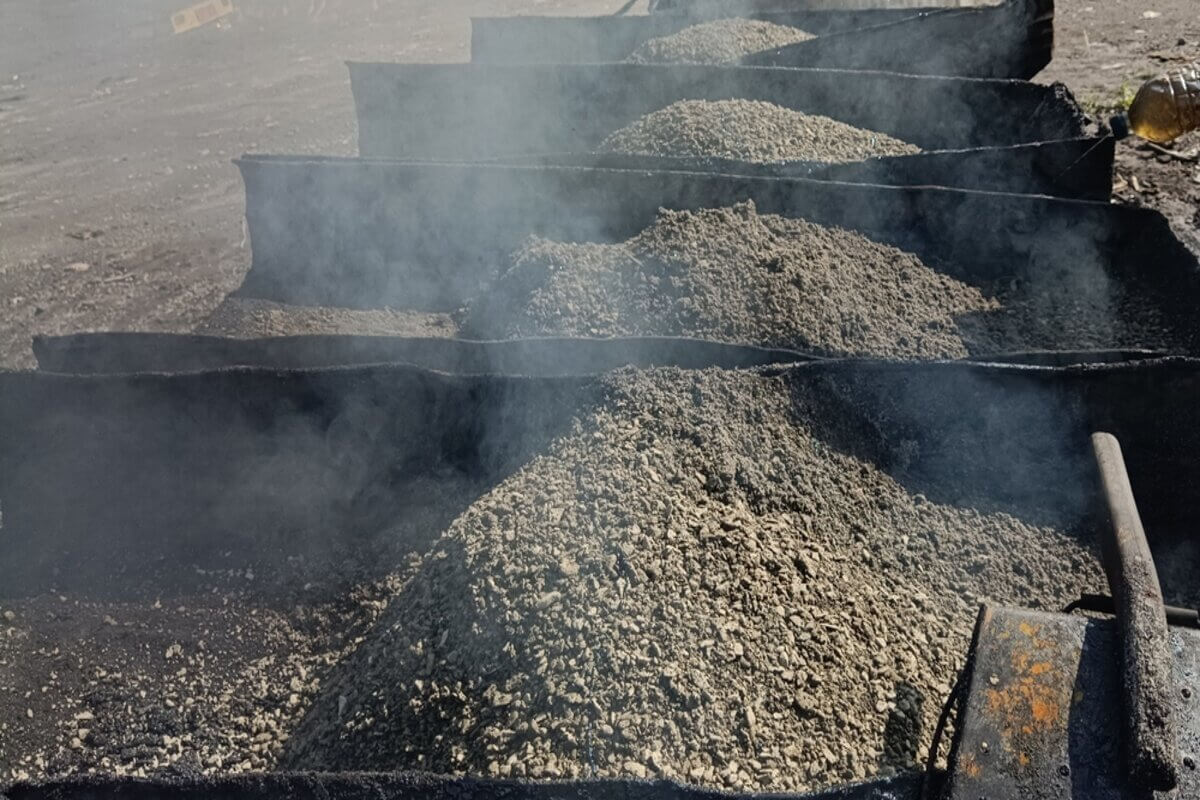Hot Mix Asphalt: The Structure for Safe and Secure Angled Parking Lots
Hot Mix Asphalt: The Structure for Safe and Secure Angled Parking Lots
Blog Article
Opening the Secrets of Hot Mix Asphalt Innovation
Checking out the midsts of warm mix asphalt innovation reveals a globe where careful procedures and exact formulas assemble to shape our roads and infrastructure. The fusion of binders, aggregates, and fillers isn't just a building and construction job however a calculated orchestration of toughness and efficiency. As we peer right into the intricate dancing of components, a tapestry of resilience and sustainability unravels. Yet what lies beneath this surface area of asphaltic proficiency, and what tricks wait to be revealed in the realm of leading technologies?
Importance of Warm Mix Asphalt
Warm Mix Asphalt plays an essential role in modern-day infrastructure growth due to its longevity and cost-effectiveness. As the most generally used leading material for roads, freeways, and parking area, Warm Mix Asphalt supplies a series of advantages that contribute to its relevance in construction jobs. One key advantage is its capability to withstand heavy web traffic lots and extreme weather, giving a trusted and long-lasting surface for transport networks. In Addition, Hot Mix Asphalt is cost-efficient in both initial building and long-lasting upkeep, making it a recommended choice for numerous facilities tasks.
The toughness of Hot Mix Asphalt stems from its composition, which consists of aggregates, binder, and filler materials that are meticulously chosen and blended to meet details performance requirements. Generally, the significance of Warm Mix Asphalt in infrastructure development can not be downplayed, as it continues to be a keystone of contemporary construction techniques.
Parts of Asphalt Mixes
The composition of asphalt blends is composed of very carefully selected aggregates, binder, and filler products that are vital for achieving details performance needs. Aggregates are the main part of asphalt blends, offering toughness and stability. These aggregates can be all-natural, such as gravel or smashed rock, or synthetic, like recycled products from old pavements. The binder, typically bitumen or asphalt concrete, holds the aggregates together and supplies flexibility and toughness to the mix. The selection of the binder is crucial as it straight affects the mix's performance in different weather. Fillers, such as hydrated lime or Portland concrete, are made use of to improve the mix's workability and aging resistance. Angled Parking.
The mix and percentage of these parts play a significant role in identifying the high quality and performance of the asphalt mix. Designers carefully design the mix to meet specific requirements, considering factors like traffic volume, environment problems, and sidewalk lifespan. Correct option and harmonizing of accumulations, binder, and fillers are necessary for producing long lasting, resilient asphalt pavements.
Mixing and Production Strategies
Once the aggregates are selected, the binder, frequently asphalt cement, is contributed to bind the materials together. The binder's top quality and amount significantly impact the mix's flexibility, resistance, and toughness to ecological variables. In addition, fillers like hydrated lime or Rose city concrete may be integrated to enhance specific attributes of the asphalt mix, check my source such as its workability or moisture resistance.
Throughout production, the aggregates and binder are warmed, commonly between 250-325 ° F(121-163 ° C ), to promote blending and guarantee proper layer of the accumulations. The blending procedure needs to be complete to attain an uniform blend that advertises the preferred performance features of the asphalt. Numerous methods, such as set blending or drum blending, are utilized to achieve regular and high-quality asphalt blends for building jobs.
Factors Affecting Asphalt Efficiency
Elements affecting asphalt efficiency encompass an array of variables that affect the longevity, longevity, and overall high quality of asphalt sidewalks. One key element is the high quality of products made use of in the asphalt mix.

Layout considerations, such as pavement thickness and drain, are necessary in making certain the long-term performance of the asphalt pavement. By carefully considering these professionals, engineers and aspects can enhance asphalt performance and enhance the service life of sidewalks.
Lasting Practices in Asphalt Innovation

WMA permits for the production and positioning of asphalt blends at lower temperatures contrasted to traditional hot-mix asphalt, resulting in minimized energy usage and greenhouse gas exhausts. The use of porous asphalt blends can help reduce stormwater drainage issues by enabling water to penetrate through the pavement and right into the ground, promoting all-natural water purification and charge procedures.
Conclusion
To conclude, hot mix asphalt technology plays an important function in contemporary infrastructure advancement as a result of its sturdiness and cost-effectiveness. By thoroughly stabilizing elements, utilizing correct blending methods, and thinking about different aspects, designers can develop high-grade asphalt blends that hold up against rush hour lots and extreme climate condition. Accepting sustainable methods, such as using warm-mix click here for more technologies and recycled products, additionally improves the environmental kindness of asphalt innovation.
Mixing and production strategies in warm mix asphalt technology involve the specific mix and processing of accumulations, binder, and fillers to produce a long lasting and high-performance asphalt mix.Factors influencing asphalt performance include a range of variables that influence the toughness, durability, and overall top quality of asphalt pavements. Lasting methods in asphalt technology incorporate different campaigns aimed at reducing the environmental effect of asphalt manufacturing and paving processes. By incorporating redeemed asphalt pavement (RAP) and recycled asphalt tiles (RAS) into brand-new asphalt mixes, the sector can substantially reduce a fantastic read the intake of raw materials and power, while also reducing garbage dump waste.
WMA allows for the manufacturing and positioning of asphalt mixes at reduced temperatures compared to typical hot-mix asphalt, resulting in decreased power consumption and greenhouse gas discharges.
Report this page